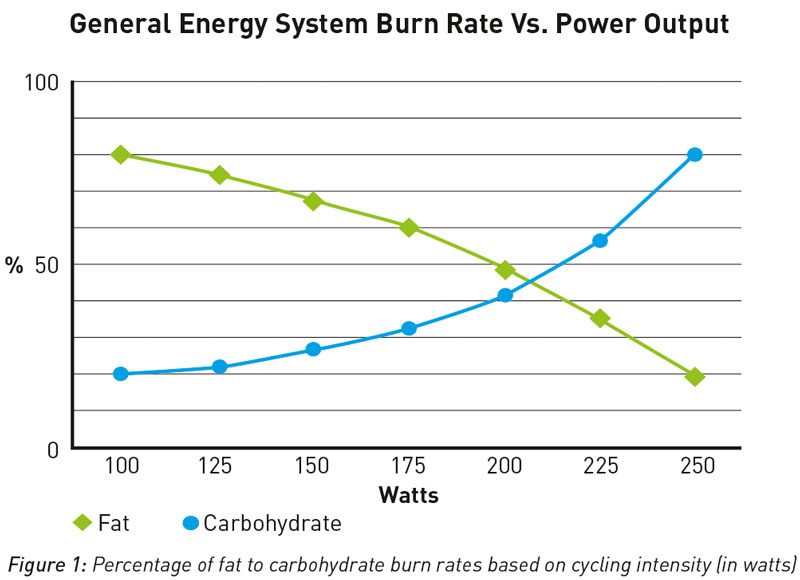David Heatley offers nutrition advice to help you go the distance.
With the weather warming up, now is a great time to push yourself to tackle longer rides, and knowing what and how much to eat and drink before, during and after a big ride will help you reach your full potential.
Fat and carbohydrates are the primary fuels you burn during exercise. When you ride at an easy pace (low power output) you generally burn a higher percentage of fat to carbohydrate. As you increase your intensity, and ride faster you produce more power, the ratio of fat to carbohydrate changes and you start burning a higher percentage of carbohydrate to fat.
A seasoned cyclist will have enough carbohydrate stored in their body for around one-to-two hours of high intensity riding. Once those stores are depleted, the cyclist “bonks”, and it only takes two to three minutes to go from riding at high intensity to being unable to ride faster than around 12 km/h. This is because the body can’t metabolise fat fast enough to provide the muscles with enough energy for intense riding.
There are two standard protocols for endurance sports nutrition: consuming 30–60 grams of carbohydrate per hour or one gram per kilogram of body weight per hour. I recommend that you adopt the 30–60 grams of carbohydrate per hour rule if you plan to ride at a leisurely but steady pace and one gram of carbohydrate per kilogram of body weight per hour for riding at race pace.
These carbohydrate requirements can be met by consuming a variety of combinations of sports drinks, sports bars and gels and normal food like fruit, ANZAC biscuits, fruit cake and sandwiches. It’s better to start off your ride consuming low GI foods, such as energy bars, and slowly introduce high GI foods, such as gels and sports drinks.
If you’re setting out on a ride lasting more than two hours, eat a low GI meal such as porridge, muesli or brown bread before you set out. After your ride, tuck into a low GI carbohydrate meal containing pasta, rice or potatoes. In the evening, I recommend you eat a meal with a good source of protein, either from a lean red meat or from chicken or fish, combined with serving of lightly steamed vegetables. Avoid consuming alcohol and fried foods after a ride as they will hinder recovery.
As for hydration, during a ride you drink fluid to replace water and electrolytes lost through perspiration. The hotter the day, the more you perspire and the more fluids and electrolytes you’ll need to replace. If you know you’re going to be riding through the middle part of a really hot day it’s important to keep on top of your hydration early in the ride. Headaches are a sure sign that you are dehydrated and you should find a source of water, seek some shade and rest while you rehydrate.
Hydration is further complicated because many riders rely on the carbohydrate in sports drinks to provide their fuel as well. On cooler days, they may not drink enough to meet their 30–60 grams of carbohydrate per hour. Supplementing sports drinks with a snack will help. Some people suffer from gastric distress when taking gels and sports drinks. To avoid this, either stick with a low GI food, such as energy bars, or train yourself to digest gels during the ride in the last four weeks leading up to the event.
These tips are guidelines and I strongly recommend that you experiment to find out what works for you.
David Heatley runs Cycling-Inform.
Ride On content is editorially independent, but is supported financially by members of Bicycle Network. If you enjoy our articles and want to support the future publication of high-quality content, please consider helping out by becoming a member.



How do I adapt these stats to long distance/ medium distance loaded touring ? For example, will be touring again in Japan ( spring time) for 2 months and hopefully 2000 klms.
Reblogged this on BikeNCA.
When eating carbs it is best to avoid Pasta and wheat based products as they are very inflammatory and tie up minerals(magnesium,Zinc etc.) in the small intestine. Be careful not to eat carbs with a high Glycemic index in the last hour before riding as it may spike your insulin and leave you starting your ride with low blood sugar.